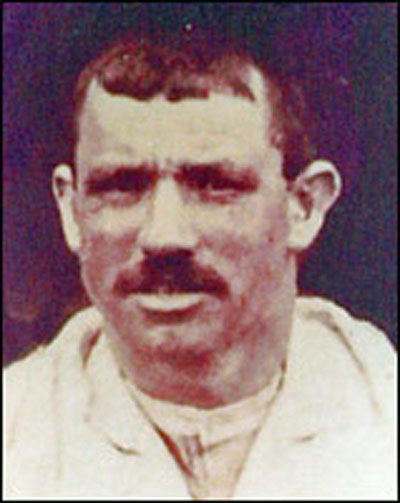|
|||
|
|||
|
During the mid 19th Century, Ironstone Mining became established in Burton Latimer and the surrounding areas and was a significant industry within the locality until the 1920s. As with much of the heavy industry of this period, mining could be a very hazardous occupation, which is illustrated by the following newspaper reports of the time. Northampton Mercury, 5th May 1916 On Saturday Mr J.T. Parker held an inquest touching on the death on Thursday of William Evans, a married ironstone labourer aged 49 years of Burton Latimer. The Mines Inspector attended the inquiry, at which evidence was given that the deceased with others was working in the pits of the Clay Cross Iron Co. getting stone, which was loaded into wagons. About five o'clock, just as he and a man named Craddock had filled a wagon, something gave way and a lot of earth and stone fell from the top of the working. Evans was buried beneath three to four tons of the material, and though he was dug out speedily, was found to be dead. Subsequent examination showed that one of the props supporting the roof of the working had been broken. This, it was stated, was of cast iron, and witnesses were examined closelyas to their opinion of the suitability of this kind of prop. Wood or steel were admitted to be the best for the work, but wooden props are scarce and steel very expensive. To his wife the deceased had expressed a fear that the props were not suitable. There had not previously been an accident with the cast-iron ones which had been introduced about three weeks ago; and other men working in the pit had not considered them dangerous. In the end the Jury returned a verdict of "Accidental death". Northampton Mercury, 12th January 1917 An inquest was held at the Kettering General Hospital on Tuesday by Mr J.C. Parker (Deputy Coroner), with regard to the accident which occurred at the Clay Cross Company's ironstone mines on Saturday morning, when Frederick Green (41) ironstone labourer of Burton Latimer, received injuries which resulted in his death at the Kettering Hospital. Mr P.S. Lea, H.M. Inspector of Mines, Mr C.R. Lane (representing the company) and Mr Joseph Farmer (the company's local acting manager) were present. Harry Mason, ironstone labourer, of Burton Latimer, brother-in-law of the deceased, identified the body. On Saturday morning, about a quarter to eleven, deceased was trying to "bar down" a large piece of stone that would weigh about two tons. He was undermining to a depth of of three feet after inserting one prop. The piece undermined was seven to eight feet in length, and he had placed the prop in about the middle. Witness went away to another working, and a few minutes afterwards heard Green shout. On going to see what had happened he found him lying on the ground with the stone on his leg. He was able to speak, but did not say how the accident had happened. As a practical miner witness could see that the large piece of stone in question had come away suddenly and fallen on Green. His gangway was about eight or nine feet in width, and when the stone had fallen there was still room for a man to stand. If Green had had any warning he could have stepped out of the way. By Mr Lea: There was a break visible after the accident. By a Juror: It was the usual practice that only one prop should be used in cases of such a piece of stone. Dr Houghton said he saw Green soon after he was admitted to hospital, and found him suffering from shock, loss of blood and great crushing of his left leg just below the knee. Witness amputated it from the thigh, but the man died the same night from shock. Joseph Farmer, the manager, gave similar evidence to that of the first witness and said he last saw Green at work at a quarter to nine on Saturday morning. After deceased had been got out of the pit, witness asked him how the acident happened, and he said he had been trying to bar the stone down, and couldn't shift it. He then tried to loosen it on the right-hand side with his pick, and it came away suddenly. It seemed to him (witness) that Green must have knocked away a "key". By Mr Lane: When witness was on the spot earlier in the morning he could not see any vertical break. The jury returned a verdict of "Accidental death". An article detailing the history of Ironstone Mining around Burton Latimer can be found in the Industry section here. |
|||
